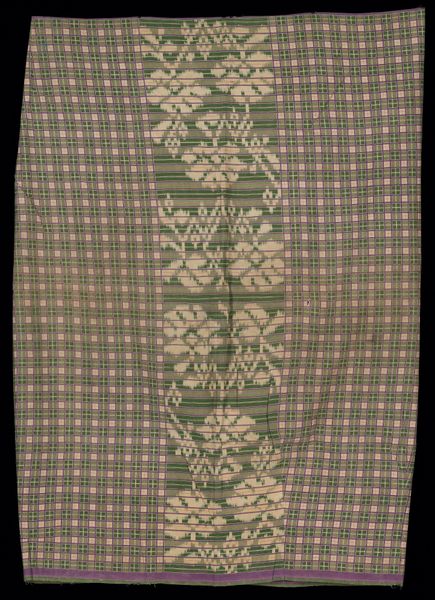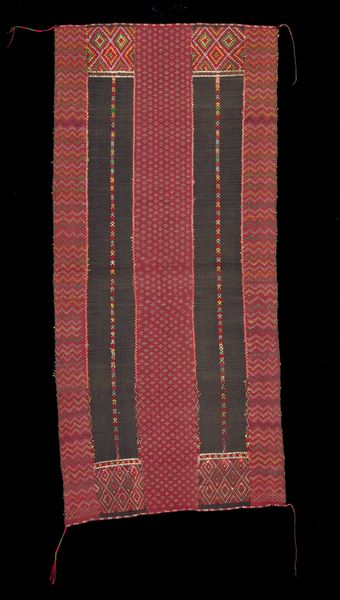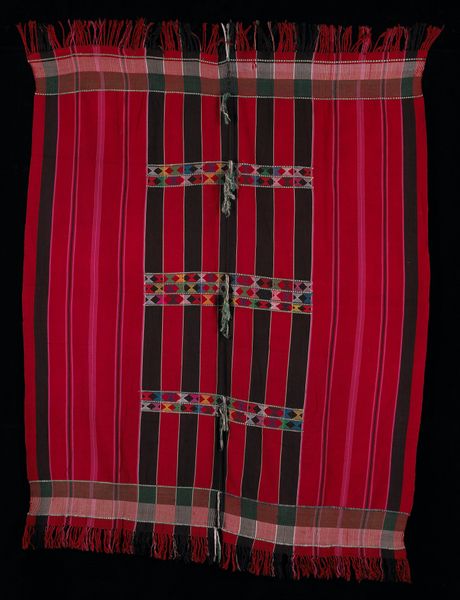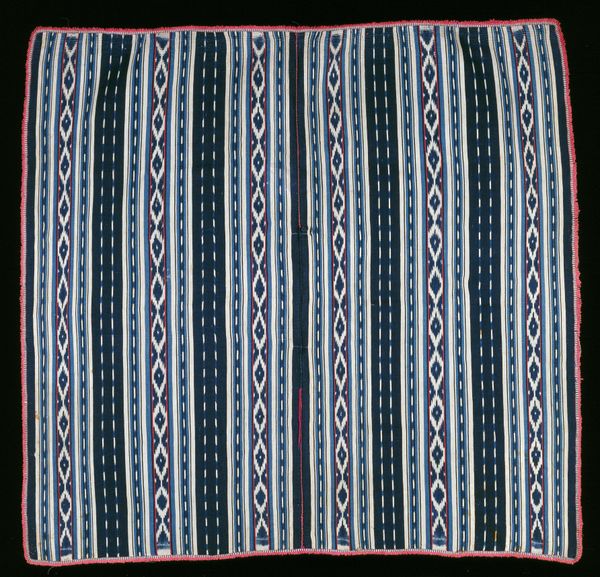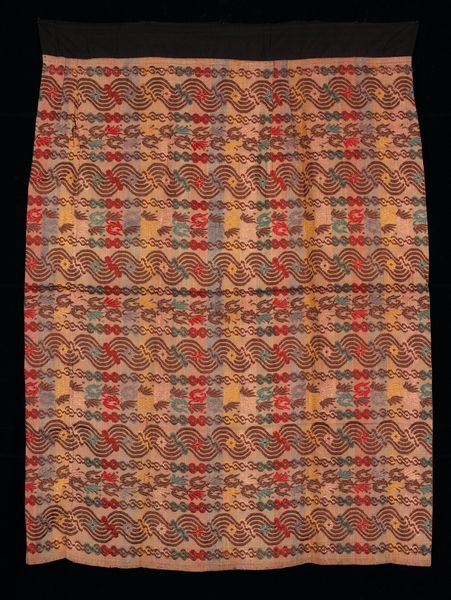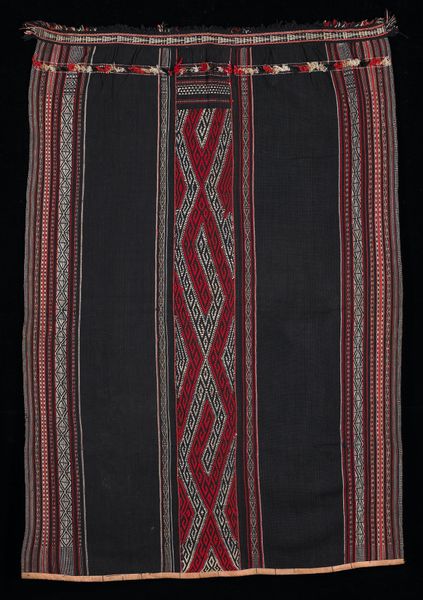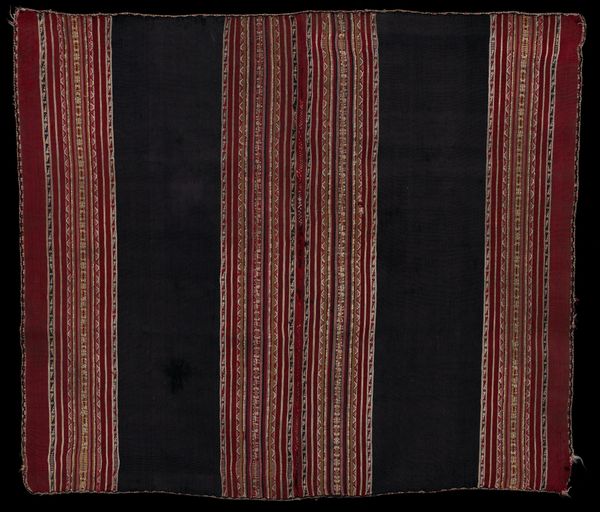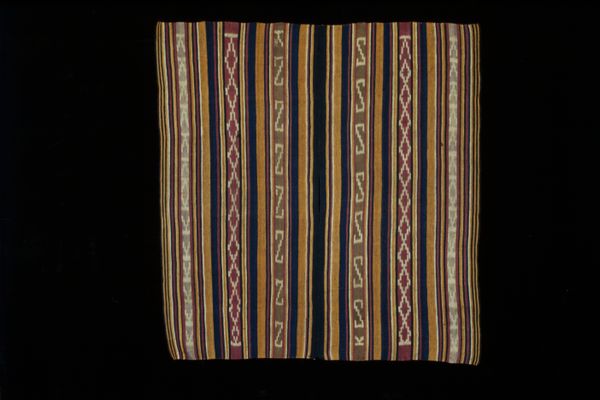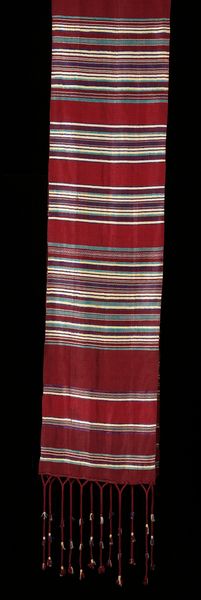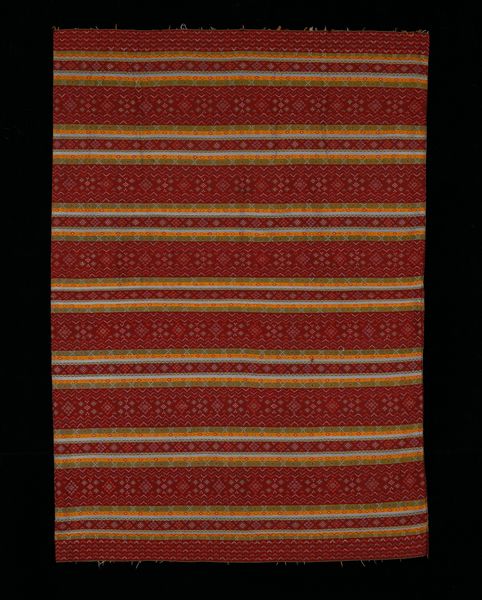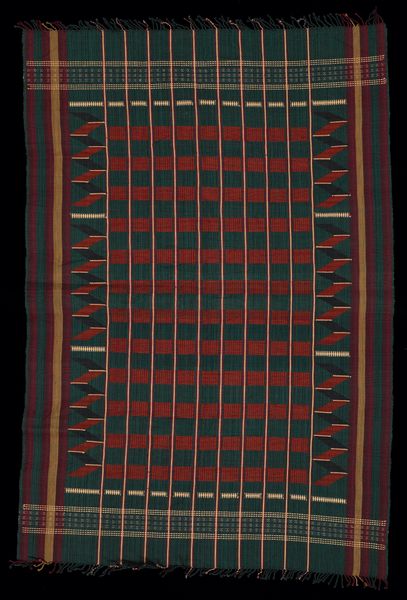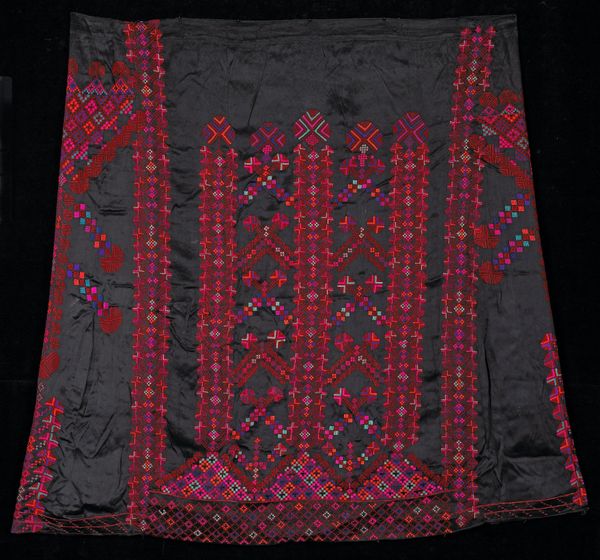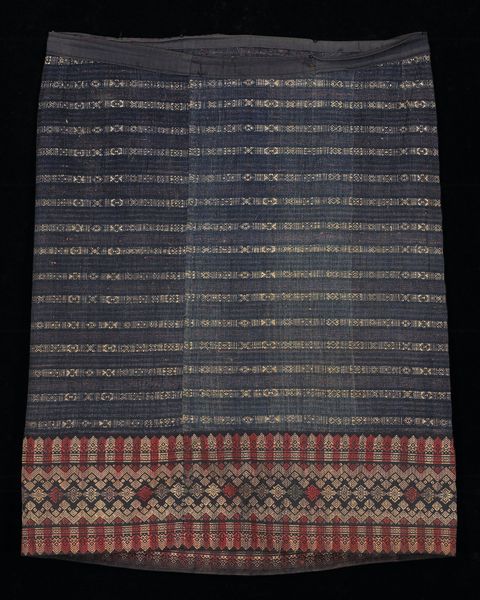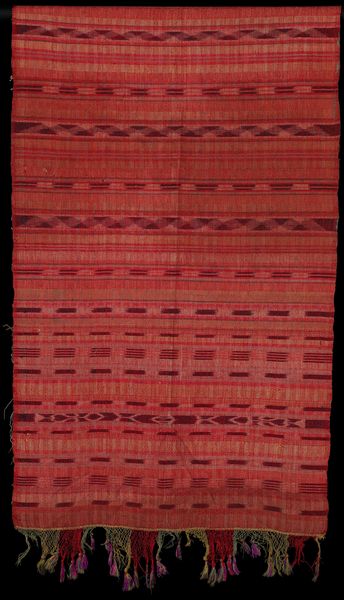
fibre-art, weaving, textile, cotton
#
fibre-art
#
weaving
#
textile
#
geometric
#
cotton
#
indigenous-americas
Dimensions: 45 x 27 in. (114.3 x 68.58 cm) (with fringe)
Copyright: Public Domain
Editor: This vibrant red textile, titled "Man's Cofradía Tzute," dates from around 1900-1920. It's crafted from woven cotton, featuring these intriguing embroidered figures and geometric patterns. The overall effect is striking but what exactly was it meant to represent? Curator: Well, considering its socio-historical context, the term "Cofradía" refers to a religious brotherhood in Guatemala. This Tzute, a type of cloth, likely held significance within that community. It wasn’t merely decorative. Look closely at the stylized birds and geometric designs. Do they suggest anything to you about the weaver's role? Editor: I see them. And given what you mentioned about brotherhoods, could they be related to particular family crests or community symbols? Curator: Exactly. It's likely a visual articulation of identity and belonging. Think about the social hierarchy and cultural values prevalent in early 20th century Guatemala. This weaving becomes a potent form of communication, both asserting Maya identity and perhaps negotiating colonial power dynamics. The vibrant red itself could hold ritual significance. Editor: So, it's much more than just a pretty textile; it's a statement! The textile medium itself signifies an act of rebellion or resistance to those who occupied it at the time, right? Curator: Precisely. The public display of these cloths reinforces cultural continuity and perhaps, even defiance in the face of cultural disruption. It gives you something to think about. Editor: Absolutely. This conversation gave me a completely different view on the cloth, now it makes so much more sense in the bigger scheme of things!
Comments
No comments
Be the first to comment and join the conversation on the ultimate creative platform.
